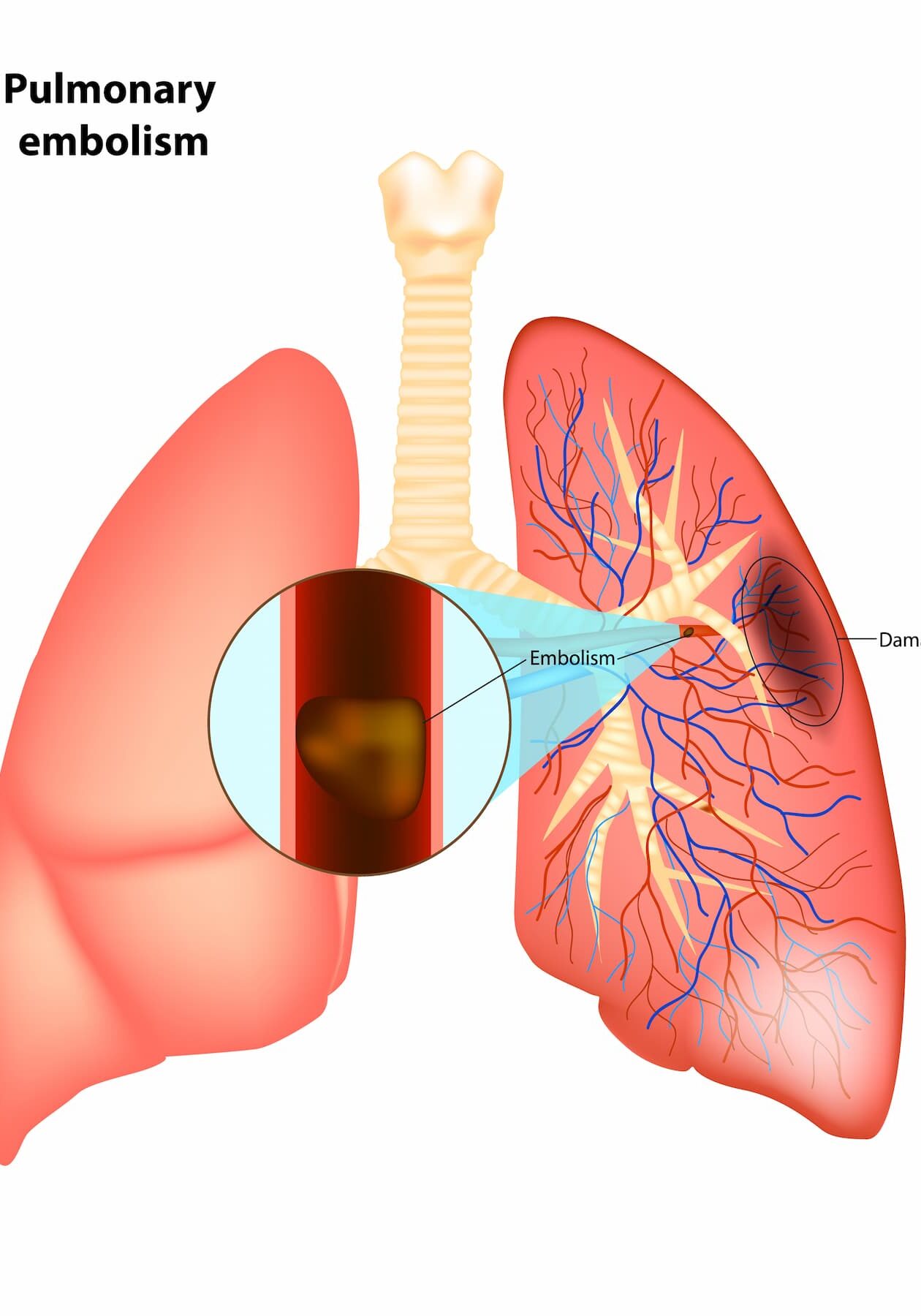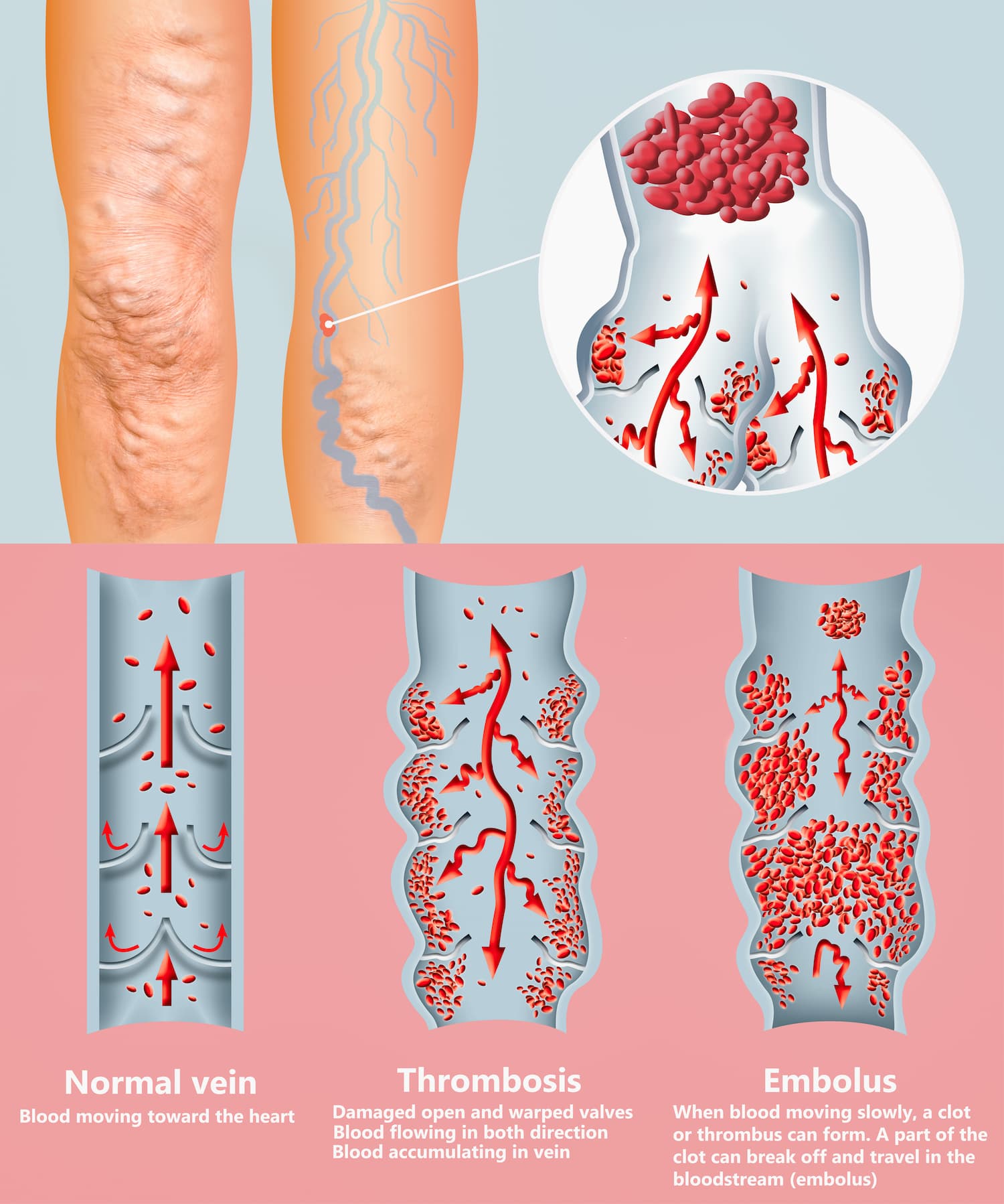Pulmonary Embolus
As a life-threatening condition, you must seek prompt medical help if you believe you or a loved one is having a pulmonary embolism. With swift medical care and treatment, it's possible to make a full recovery from this condition.

What is Pulmonary Embolus?
A pulmonary embolism occurs when a blockage forms in one of the vital pulmonary arteries within your lungs. These blood clots typically travel to the lungs from other areas in the body, often via the deep veins in your legs. Deep vein thrombosis (DVT) can result in pulmonary embolism. As a clot blocks the blood flow, this means no blood is reaching certain parts of your lung. If untreated, a pulmonary embolus can be fatal.
Symptoms of Pulmonary Embolus
The signs of pulmonary embolism can greatly vary based on the size of the clots, whether you have pre-existing health issues, and how much of your lung is involved. Some of the symptoms to watch out for include:
- Sudden shortness of breath that gets significantly worse with exertion
- Chest pain that is sharp and worse when you breathe deeply
- A cough that produces either blood or blood-streaked spit
- Dizziness and excessive sweating that occurs suddenly
- Swelling and pain in the legs may suggest a DVT
- A rapid or irregular heartbeat
- Discoloured skin that is clammy to the touch may suggest a lack of oxygen
It is vital to seek medical help if you experience any of the above symptoms. Pulmonary embolism is a serious condition and must be handled by a medical professional as soon as possible once symptoms occur.
Causes of Pulmonary Embolus
The specific cause of a pulmonary embolism is when a blood clot or similar material gets wedged in an artery within your lungs. Typically, this blood clot is caused by DVT, though there may be other original causes for the clot. However, your lifestyle and medical health can impact your likelihood of experiencing a pulmonary embolism, though they are not the direct 'cause'.
Heart disease, cancer, and disorders that affect the body's ability to clot can lead to pulmonary embolism. COVID-19 has also been found to carry an increased risk of this condition, alongside environmental causes such as surgery and recent broken bones. Because the risk of pulmonary embolism is high during surgery, patients are typically given medications to prevent this from happening.

Treatments and investigations
When diagnosing pulmonary embolus, time is of the essence. Typically, a computerised tomography pulmonary angiography test will be performed to see the blood vessels in your lungs. This involves injecting a dye and then having chest x-rays for confirmation of diagnosis. A ventilation-perfusion scan may also be carried out to check the flow of air and blood in the lungs.
Immediate treatment for pulmonary embolus is typically in the form of anticoagulant medication that would need to be taken for a period of at least 3 months. You may also be asked to reduce your risk by stopping smoking, getting enough exercise, and avoiding sitting for long periods of time.
Make an enquiry